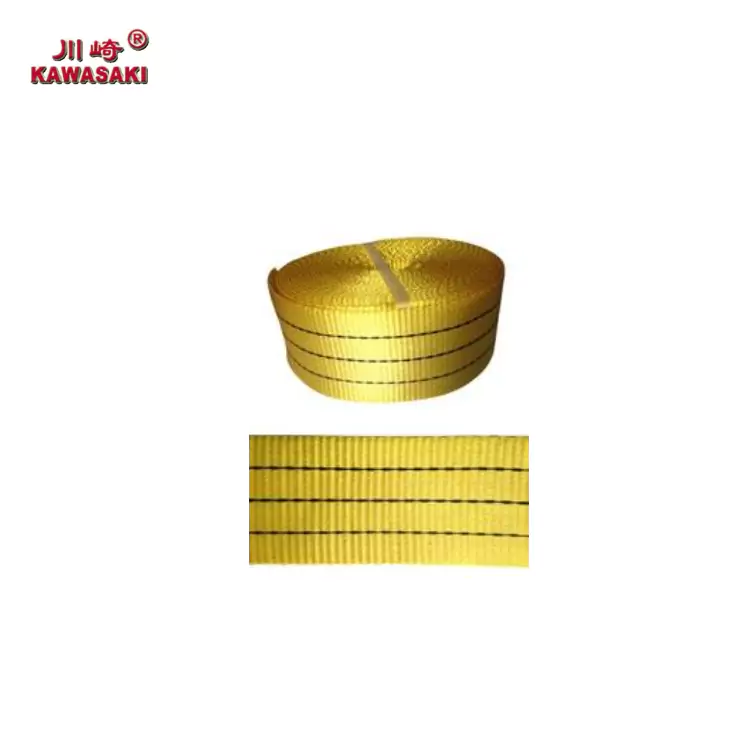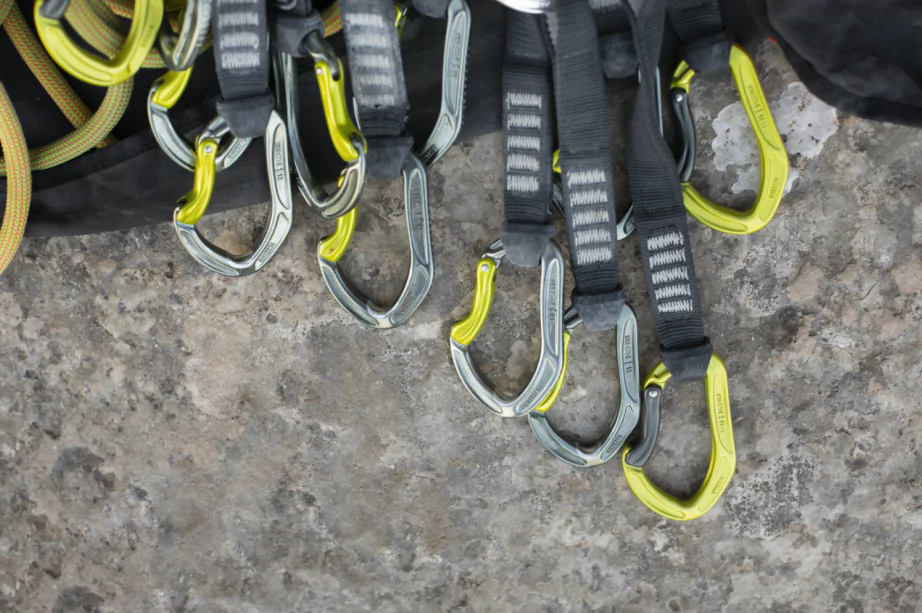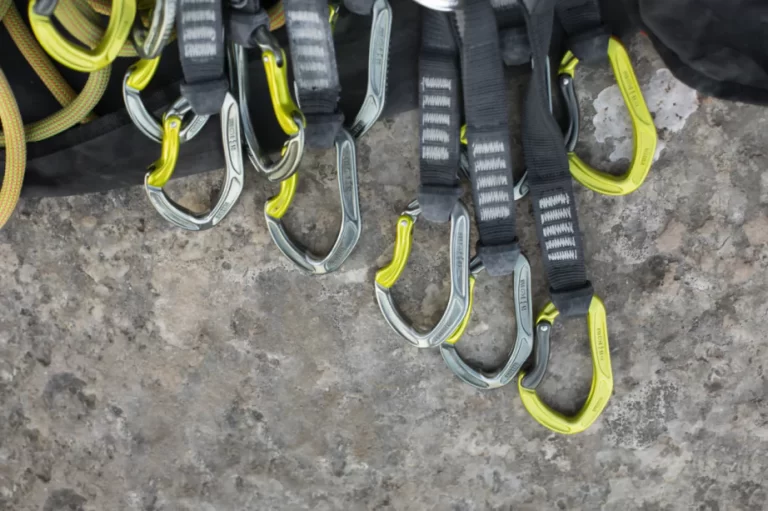In the construction and logistics industries, webbing slings are tools known for their strength, flexibility, and lightness. They are mainly crafted from polyester that resists UV rays and are available in round and endless styles to suit different loads and weights. Key factors to consider when choosing include load capacity, length, material strength, and adherence to safety standards set by EN 1492−1: 2000. APOLLO slings are distinguished by their construction, customization options, and thorough quality checks. To maintain functionality and longevity of the equipment in industrial settings, ensure regular inspections for any signs of damage, strictly adhere to weight restrictions, and store the equipment away from sunlight and chemicals as prescribed by guidelines to guarantee safe operation and optimal performance.
What Are the Fundamentals of Webbing Slings?
In sectors like building and transportation, web slings are commonly employed for hoisting and fastening goods. Their sturdy yet lightweight build makes them highly adaptable for diverse tasks.
Key Features and Characteristics of Webbing Slings
These slings possess traits that make them perfect for lifting. Constructed from synthetic fibers such as polyester, they offer resilience and longevity. Available in single or multi-layer designs, they support different weight limits. Reinforced loops enhance safety and lifespan. Their low-stretch nature ensures accurate load placement.
Common Materials Used in Webbing Slings
Polyester is a choice for making webbing slings due to its strength and flexibility as well as its ability to withstand UV rays and chemicals, for outdoor applications. In situations, Nylon or polypropylene could be considered based on particular needs.

Advantages of Using Webbing Slings in Complex Applications
Using nylon straps of conventional lifting gear has its advantages, such as being more manageable and reducing fatigue for workers during long periods of use. They can adjust to varying loads without causing damage. They are safe to use near flammable materials or electrical risks due to their nonconductive and spark-resistant qualities.
How Do You Choose the Right Webbing Sling?
Choosing the right webbing sling involves taking into account your requirements carefully.
Load Capacity and Weight Limits
Importance of Breaking Strength and Safety Factor
Ensuring the slings’ breaking strength is higher than the maximum load is crucial for safety purposes.
Length, Width, and Design Specifications
Single-Ply vs Multi-Ply Webbing Slings
Adjust the size of the sling to fit your lifting needs. For loads, opt for single-ply slings and, for heavier tasks, go for multi-ply slings that provide more strength without sacrificing flexibility.
Environmental Conditions and Material Compatibility
Resistance to Chemicals, UV, and Abrasion
The duration of a sling is influenced by aspects such as how polyester slings withstand UV harm and chemical contact while retaining their strength in harsh conditions.
What Types of Webbing Slings Are Available?
Varieties of webbing slings are tailored to uses in various industries.
Flat Webbing Slings for General Use
Flat webbing slings are tools for various lifting purposes, aiding in the even distribution of pressure across loads to minimize damage and ensure stability during lifting activities.
Round Webbing Slings for Heavy-Duty Applications
Round slings are perfect for tasks as their rounded form evenly distributes the load around objects such as pipes or barrels.
Endless Webbing Slings for Versatility
Slings that are endless show versatility as they can be used in various setups, such as choker or basket hitches, thanks to their continuous loop structure that removes any potential weak spots, from seams or joints.
Comparison of Different Sling Configurations
When choosing between slings or round slings, or even endless slings for your needs and tasks at hand, consider factors like how easy they are to use and how well they distribute the load across various points.
Recommendations for APOLLO Products in Complex Applications
What Makes APOLLO Flat Webbing Slings Stand Out?
APOLLO flat webbing slings are designed to meet the requirements of lifting tasks with outstanding dependability. Crafted from 100 percent high-strength polyester material for lasting durability. Their minimal stretch allows for load placement. Available in either ply or double ply versions and equipped with strengthened loops for increased safety and longevity.
Where Should You Use Flat APOLLO Slings?
These slings shine when evenly spreading pressure is key. They safely lift fragile or uneven objects. Ideal for building, shipping, or factory work.
How Do APOLLO Round Webbing Slings Ensure Durability?
Built for hard use, round slings endure harsh settings. Their circular form protects cylindrical loads. Premium polyester resists sunlight and chemicals.
Why Are Round Slings Ideal for Heavy Loads?
When dealing with loads in industries such as shipping and oil, and gas, or when handling heavy equipment, robustly built round slings excel at safely managing high tensions.
How Can APOLLO Endless Webbing Slings Be Customized?
Endless slings provide flexibility with their loop structure that allows for various setups, such as choker or basket hitches, to cater to different industry requirements by adjusting length and material options accordingly.
Ensuring Safe Usage of Webbing Slings
What Should You Inspect Before Using a Sling?
Make sure to check slings for any wear and tear or damage, like cuts or frayed fibers, before using them for any task. It’s important to ensure that the reinforced loops are in condition and not damaged. Regular inspections are key for both safety and the durability of the slings.
How to Detect Sling Damage?
Visible indicators of wear may appear as discoloration or hardening. Surface flaws like gashes or rips should be noted. Focus examination on high-tension zones, particularly attachment points and stitching areas where stress concentrates.
What Are Proper Handling and Storage Methods?
Preserve sling integrity through gentle treatment. Prevent contact with abrasive edges or dragging across uneven terrain. For storage, select a moisture-free, sheltered space. Shield from direct sunlight and corrosive substances that may weaken the material.
How Can Overloading Be Prevented?
Strictly observe manufacturer-rated capacity limits. Select slings with substantial safety buffers. This precaution accommodates sudden stress variations during operation.
Why Is Compliance with Standards Important?
Following established guidelines (e.g., EN 1492-1:2000) is critical for two reasons: it minimizes potential hazards from equipment malfunction and optimizes workflow productivity through proven operational protocols.
Enhancing Performance with APOLLO’s Innovative Solutions
What Advanced Techniques Does APOLLO Use?
APOLLO uses manufacturing techniques and ensures rigorous quality inspections at every stage of the production process to maintain high standards of quality certification, such as ISO9001 and ISO2000, to demonstrate its dedication to excellence in products.
How Does APOLLO Guarantee Reliability?
APOLLO performs tests at the factory, which cover assessments of lifting capacity and stability to guarantee that the products align with national regulations and meet client demands.
How Are Solutions Tailored for Unique Needs?
APOLLO tailors its products to meet the needs of different industries by providing options such as adjusting length and materials or packaging modifications to ensure quality while allowing for flexibility in usage.
FAQ
Q1. What materials are used in webbing slings?
A: The majority of slings are constructed using polyester, known for its strength and flexibility, as well as its ability to withstand UV rays and chemicals.
Q2. How do you store a webbing sling properly?
A: Remember to store it in a dry area to maintain its quality and avoid any damage from sunlight or contact with harmful substances.
Q3: Can round webbing slings handle heavy loads safely?
A: Yes, their circular design evenly distributes weight around cylindrical objects while maintaining structural integrity under high tension conditions.


